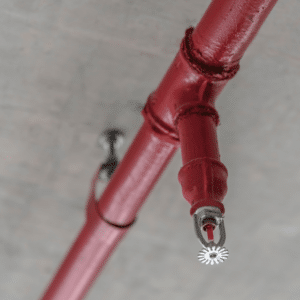Did you know you need a Miami fire sprinkler inspection company to evaluate your fire sprinkler system regularly? DynaFire is here to perform that service and let you peek behind the curtain at what that inspection process looks like.
The fire sprinkler system on your commercial property is integral to your Fire & Life Safety plan. Making sure it works when you need it is also essential. By having the certified technicians at our Miami fire sprinkler inspection company visit your facility and perform regular inspections, you’re doing your part to keep your business and your building occupants safe. Let’s dive into this inspection process and discover why it’s so crucial.
Visual Inspection
We can learn a lot about a fire sprinkler system by paying close attention to the different aspects of your system. When we perform a visual inspection, here’s what we’re looking for:
Leaks – If a sprinkler leaks, we don’t need to test it just yet; we need to replace it. NFPA 25 distinguishes between “spraying” water and “dripping” water in that dripping water indicates a malfunction in the sprinkler system.
Corrosion – When water and metal hang out together long enough, some corrosion is normal. However, corrosion on the deflector (the part that disperses the water) could affect the sprinkler head’s performance.
Physical damage – Damaged deflectors can significantly alter the spray pattern’s distribution and the water density during delivery.
Paint – The only paint on a sprinkler should be from the manufacturer. Any new paint could affect the performance of the sprinkler system.
Correct installation – If a sprinkler is improperly installed, like placing an upright sprinkler in the pendent position, it won’t produce an effective spray pattern.
Proper storage – Objects obstructing sprinkler distribution patterns, like storage positioned too close to sprinkler deflectors, can reduce the system’s efficiency.
Equipment Testing
After a thorough visual inspection, our team will test your sprinkler system to ensure it works properly.
Test control valve – We’ll ensure the control valve is fully open, then attach a tamper-resistant seal to ensure it stays in the correct open position.
Gauge readings – To ensure proper water pressure in your fire sprinkler system, we will check the gauge and record the readings.
Inspector’s test – This test mimics a sprinkler activation, ensuring it sends a signal to the fire alarm panel within 90 seconds. Once the fire sprinkler systems are inspected, our Miami fire sprinkler inspection company technician confirms that signals were sent to the monitoring company and restores the systems to service.
Backflow Testing
After testing the equipment, we perform the final test on the backflow preventer. This device is connected to the water line supplying the sprinkler system and the public water line from the street. Its purpose is to halt the backward flow of water, safeguarding against potential contamination of the public water supply.
Documentation
Your inspection will conclude with documentation of our findings and any recommendations we made regarding repairs or replacements. At this time, we can schedule your next inspection.
How Often Should DynaFire Inspect Your Fire Sprinkler System?
The NFPA recommends regular testing for fire sprinkler systems, including quarterly checks for mechanical and alarm devices, semi-annual assessments for vane and pressure switch types, and yearly complete system tests. Fire sprinkler gauges should be tested and replaced every five years, and dry sprinkler systems need testing or replacement every ten years.
Contact us if you’re unsure when a Miami fire sprinkler inspection company last inspected your sprinkler system. We’ll be happy to inspect it thoroughly and provide recommended repairs or upgrades to protect you and your property.






